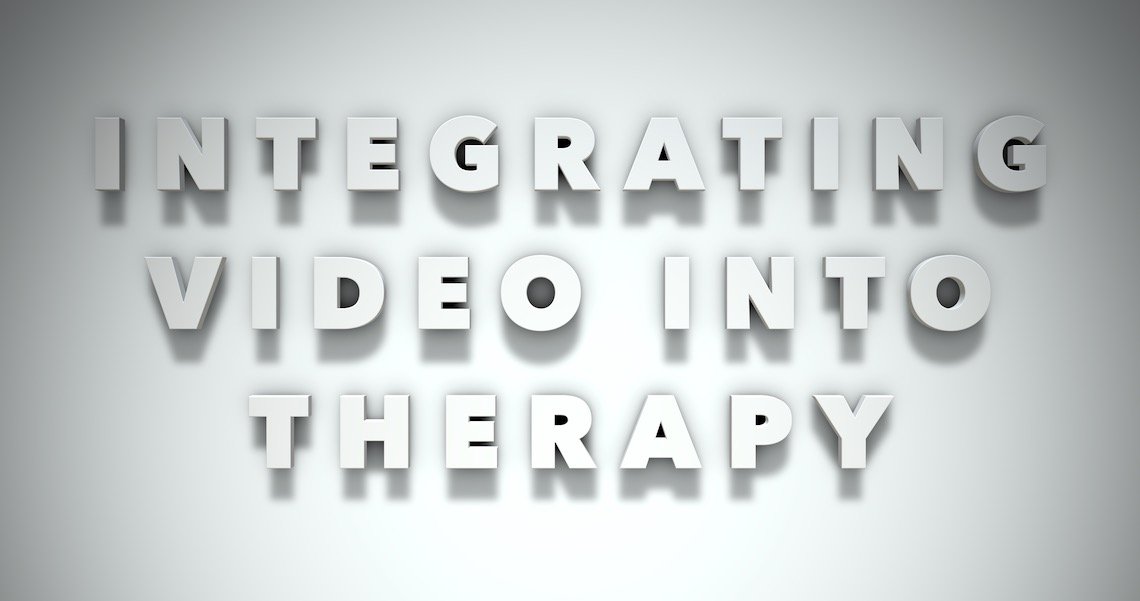In the realm of psychotherapy, various methodologies exist to delve into the complexities of the human psyche and facilitate healing and growth. One such approach, psychodrama, stands out for its dynamic and interactive nature, offering individuals a unique platform to explore and understand their emotions, behaviors, and relationships.
UNDERSTANDING PSYCHODRAMA
Psychodrama, pioneered by Jacob L. Moreno in the early 20th century, is a form of psychotherapy that utilizes action and role-playing to explore and address psychological issues. At its core, psychodrama seeks to bridge the gap between verbal expression and action, allowing individuals to embody their thoughts, feelings, and experiences in a safe and supportive environment.
KEY COMPONENTS OF PSYCHODRAMA
Central to the practice of psychodrama are three key components:
- The Stage: Psychodrama typically takes place in a designated space known as the stage, which can be a physical stage or simply an area set aside for therapeutic purposes. The stage serves as a blank canvas where participants can enact scenes from their lives or imagination.
- The Protagonist: In psychodrama, the individual seeking therapy is referred to as the protagonist. The protagonist takes center stage, exploring their inner world through guided improvisation and role-playing.
- The Auxiliary Ego: Supporting the protagonist are other participants known as auxiliary egos or auxiliary figures. These individuals take on roles such as family members, friends, or even aspects of the protagonist’s psyche, providing interaction and perspective within the psychodrama.
THE THERAPEUTIC PROCESS
Psychodrama sessions typically follow a structured format, guided by a trained therapist known as the director. The process often begins with warm-up activities to establish trust and rapport within the group. The protagonist then identifies a specific issue or scenario they wish to explore, which serves as the focal point of the psychodrama.
Through guided improvisation, the protagonist enacts the chosen scene, with auxiliary egos joining in to recreate the dynamics of the protagonist’s interpersonal relationships or inner conflicts. This interactive process allows the protagonist to gain insights into their emotions, behaviors, and underlying motivations.
APPLICATIONS OF PSYCHODRAMA
Psychodrama has proven to be a versatile therapeutic tool with applications across various settings and populations. Some common areas where psychodrama is utilized include:
Individual Therapy: Psychodrama can be conducted in one-on-one sessions, allowing for personalized exploration and targeted intervention for specific issues such as trauma, addiction, or relationship difficulties.
Group Therapy: Group psychodrama sessions offer participants the opportunity to engage in collective exploration and mutual support. Group dynamics play a crucial role in fostering empathy, perspective-taking, and interpersonal growth.
Education and Training: Beyond therapy, psychodrama is employed in educational settings and professional training programs to enhance communication skills, conflict resolution, and emotional intelligence.
Community Building: Psychodrama workshops and retreats provide a platform for community building and personal development, fostering connections and resilience among participants.
INTEGRATING VIDEO PRODUCTION INTO PSYCHODRAMA
Within the field of psychotherapy, innovative techniques continuously emerge to enhance the effectiveness of therapeutic interventions and cater to diverse client needs. One such innovative integration is the utilization of video production within the framework of psychodrama. This marriage of visual storytelling and experiential therapy offers a dynamic platform for clients to delve into their inner worlds, explore emotions, and navigate personal growth.
VISUAL STORYTELLING IN PSYCHODRAMA
At its core, psychodrama is about bringing inner experiences to life through action and role-playing. By embodying thoughts, feelings, and relationships in real-time, clients gain deeper insights into their psyche and develop coping strategies to navigate life’s challenges. Video production enhances this process by capturing and immortalizing these experiential moments, allowing clients to revisit and reflect upon their journey in a tangible and impactful manner.
KEY STRATEGIES
Integrating video production into psychodrama sessions can take various forms, each tailored to the unique needs and goals of the client. Some key strategies include:
Video Documentation: Recording psychodrama sessions enables clients to revisit and reflect upon their experiences outside of therapy. Watching themselves enact scenes or interact with auxiliary egos provides valuable insight into their emotions, behaviors, and interpersonal dynamics.
Creative Expression: Encouraging clients to create their own videos as part of the therapeutic process offers a powerful outlet for creative expression. Whether through storytelling, visual art, or digital media, clients can externalize their inner experiences and communicate their truth in a medium that resonates with them.
Narrative Reconstruction: Collaboratively editing and reimagining video footage can facilitate narrative reconstruction, empowering clients to rewrite their life stories from a place of strength and resilience. By reframing past experiences and envisioning alternative outcomes, clients can cultivate a sense of agency and empowerment in shaping their future.
BENEFITS OF VIDEO PRODUCTION IN PSYCHODRAMA
The integration of video production into psychodrama offers several distinct benefits for clients and therapists alike:
Enhanced Reflection: Video recordings provide clients with a visual record of their therapeutic journey, allowing for deeper reflection and insight between sessions.
Empowerment Through Creation: Engaging in the creative process of video production empowers clients to take ownership of their healing journey and express themselves in meaningful ways.
Multi-Sensory Engagement: Visual and auditory stimuli enhance the therapeutic experience, engaging multiple senses and promoting holistic healing.
Flexible and Adaptive: Video production techniques can be adapted to accommodate diverse client needs and preferences, making psychodrama accessible to a wider range of individuals.
CONSIDERATIONS FOR VIDEO EQUIPMENT SELECTION
For video makers collaborating with licensed psychodramatists, selecting the appropriate equipment is essential to capturing the nuances and emotions of psychodrama sessions effectively. Before delving into specific equipment recommendations, it’s crucial to consider the unique requirements and challenges of filming psychodrama sessions. Some key considerations include:
Portability: Psychodrama sessions often take place in dynamic and ever-changing environments, requiring video equipment that is lightweight, portable, and easy to set up and maneuver.
Low-Light Performance: Many psychodrama sessions occur in dimly lit settings to create a safe and intimate atmosphere. Video equipment with excellent low-light performance ensures that important moments are captured with clarity and detail.
Sound Quality: Clear and crisp audio is essential for capturing the dialogue, emotions, and nuances of psychodrama sessions. Video equipment should be equipped with high-quality microphones or external audio recording options to ensure optimal sound capture.
Versatility: The ability to adapt to different shooting scenarios and angles is crucial for capturing the multidimensional nature of psychodrama sessions. Video equipment with adjustable lenses, stabilizers, and mounting options offers greater flexibility and creative freedom.
RECOMMENDED VIDEO EQUIPMENT
Based on the considerations outlined above, here are some recommended video equipment options for video makers collaborating on psychodrama sessions:
Camera: A DSLR or mirrorless camera with excellent low-light performance, such as the Panasonic Lumix or Sony Alpha series, is ideal for capturing the visual nuances of psychodrama sessions. These cameras offer superior image quality, interchangeable lenses, and advanced autofocus capabilities.
Lenses: A versatile lens kit including a standard zoom lens (e.g., 24-70mm f/2.8) and a wide-angle lens (e.g., 16-35mm f/2.8) provides flexibility for capturing a range of perspectives and compositions during psychodrama sessions.
Audio Recorder: An external audio recorder, such as the Zoom H4n or Tascam DR-40, paired with lavalier microphones or shotgun microphones, ensures clear and high-quality audio capture, even in challenging acoustic environments.
Tripod or Gimbal Stabilizer: A sturdy tripod or gimbal stabilizer helps maintain steady shots and smooth camera movements, enhancing the visual quality and professionalism of the footage captured during psychodrama sessions.
Lighting: The session typically occurs on a physical stage or within a designated area intended for therapeutic use, often with low-light conditions. Therefore, it is advisable to utilize portable LED lights for supplementary lighting.
ADDITIONAL PURPOSES OF VIDEO PRODUCTION IN PSYCHOLOGY
In the ever-evolving landscape of mental health care and therapy, the integration of video production has emerged as a powerful tool for fostering healing, insight, and understanding. From documenting therapeutic sessions to creating educational resources, video production serves a myriad of purposes in the field of psychology.
Capturing the Therapeutic Journey: One of the primary purposes of video production in psychology is to capture the therapeutic journey of individuals undergoing psychotherapy. By documenting therapy sessions, clinicians can review and analyze client progress, identify patterns and trends, and tailor interventions accordingly. Video recordings offer a valuable tool for self-reflection and supervision, allowing therapists to enhance their skills and techniques through constructive feedback and observation.
Promoting Psychoeducation and Awareness: Video production plays a vital role in promoting psychoeducation and raising awareness about mental health issues. Educational videos, documentaries, and online resources provide valuable insights into various psychological disorders, treatment approaches, and coping strategies. By leveraging the power of storytelling and visual communication, these videos help destigmatize mental illness, educate the public, and encourage individuals to seek support when needed.
Facilitating Therapeutic Interventions: In addition to documenting therapy sessions, video production can be used to facilitate therapeutic interventions and exercises. Guided visualization, relaxation techniques, and mindfulness practices can be enhanced through the use of multimedia presentations and video-based interventions. Virtual reality (VR) technology offers immersive experiences that simulate real-life scenarios, providing individuals with a safe space to confront and process their fears, traumas, and anxieties under the guidance of a trained therapist.
Advancing Research and Training: Video production serves as a valuable tool for advancing psychological research and training future generations of mental health professionals. Researchers use video recordings to analyze behavioral patterns, study interpersonal dynamics, and evaluate the effectiveness of therapeutic interventions. Video-based training modules and case studies provide students and clinicians with practical insights and real-world examples, enriching their learning experience and enhancing their clinical skills.
Empowering Client Empowerment and Advocacy: Video production empowers clients to share their stories, advocate for themselves, and inspire others on their journey to recovery and resilience. Personal testimonials, vlogs, and video diaries offer a platform for individuals to express themselves authentically, connect with others who share similar experiences, and challenge misconceptions about mental illness. By amplifying the voices of those affected by psychological disorders, video production contributes to greater understanding, empathy, and support within the community.
CONCLUSION
The integration of video production into psychodrama sessions offers a promising avenue for enhancing therapeutic experiences and outcomes. By capturing the essence of psychodrama through visual storytelling, video production enables clients to revisit and reflect on their journey, fostering deeper insights and personal growth. Through collaborative efforts between video makers and licensed psychodramatists, the transformative power of psychodrama can be shared with a wider audience, promoting empathy, understanding, and healing. As technology continues to evolve and new possibilities emerge, the integration of video production into psychodrama holds immense potential for shaping the future of therapeutic practice and advancing mental health care.
At ARTtouchesART, we embrace the integration of video production and psychology to produce content that delves into human emotions from both cinematic and therapeutic perspectives. Indeed, storytelling lies at the core of both video production and psychodrama. As a company founded by a filmmaker with a background in Psychology, we embrace the powerful synergy that arises from the collaboration between video makers and licensed psychodramatists.
If you are working in the field of psychology and are interested in partnering with us, please do not hesitate to reach out and discuss your process with our team. By joining forces, we can craft powerful narratives that illuminate the human experience, challenge stigma and foster growth. As the boundaries between therapy and media continue to blur, the possibilities for collaborative innovation in the realm of therapeutic storytelling are limitless, offering hope and inspiration to individuals seeking transformation.

